Building Inclusivity: Universal Design for Learning in K–12 Education
By Marylee Mercy
Approximately 15 percent of children in U.S. public schools receive special education support or services—with some states reporting numbers over 20 percent—and these figures are rapidly increasing. When considering English language learners, the numbers climb even higher. As school districts prioritize the inclusion of all learners, school design teams can support district initiatives by integrating Universal Design for Learning (UDL) into the fabric of educational environments.
Understanding UDL
UDL, rooted in the principles of universal design but applied to curriculum design, aims to remove impediments to learning. At its core are three principles:
Multiple Means of Representation: A cornerstone of UDL, this principle underscores the importance of presenting information in diverse ways. From visual aids to auditory cues, educators make content accessible to every learner, weaving together various modalities to inspire and engage.
Multiple Means of Engagement: UDL champions active learning, inviting students to participate, cooperate, and connect with the material on a deeper level. Through interactive experiences and real-world applications, educators cultivate a sense of belonging, transforming classrooms into vibrant hubs of discovery.
Multiple Means of Action and Expression: Students are encouraged to showcase their understanding through myriad avenues, such as art, speech, or technology, fostering creativity and innovation. By providing choices and advancing creativity, students can innovate, explore, and discover.
UDL embodies flexibility, recognizing that learners possess unique strengths, challenges, and preferences. Learning environments must accommodate a spectrum of needs and abilities to create an environment where all children can flourish and strive for self-actualization.
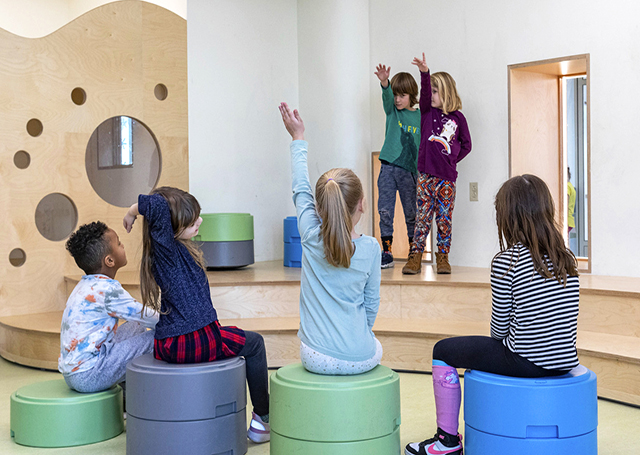
Movement improves concentration, increases retention, and appeals to those with a physical/kinesthetic learning style. Performing in front of peers builds confidence and self-esteem. Mountain View School; Studio G Architects, Associate Architect for Elementary Design; Greg Premru Photography.
Designing Spaces with UDL in Mind
Variety of Spaces: Neuroscience has shown that incorporating movement and nature substantially improve educational outcomes. Something as simple as a view out a window or a chair that allows for a bit of movement has proven positive effects, but we as designers can do so much more. By providing opportunities to move to a different space (including outside), a learning environment becomes much more dynamic, enriching, and immersive. Small break-out rooms, quiet sensory spaces, and outdoor learning environments located immediately adjacent to a typical classroom space are ideal to foster dynamic learning.
Mise en Place Design: As Universal Design requires the removal of physical barriers, UDL requires the removal of barriers to learning. Applying a mise en place approach means learning environments exist to seamlessly serve the changing needs of the user. Furniture is lightweight and readily moved or adjusted. Learning materials are visible and easily accessible. Dry erase writing surfaces are ubiquitous: on walls, storage cabinets, desks and tables. Spaces serve multiple purposes throughout the day without cumbersome adjustments. Maximizing adaptability and fluidity goes beyond accommodating to honoring and celebrating neurodiversity and varied learning styles.
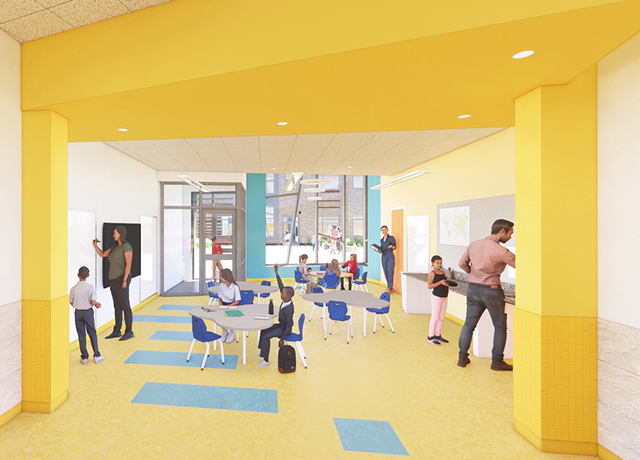
A cheerful, bustling project area adjacent to classrooms sparks creativity and stimulates the development of 21st century skills. Integration of technology, flexible furniture, and access to the outdoors engages and builds community. Florence Roche Elementary School; Studio G Architects
Sensory Experiences: From color palettes to acoustic solutions, every design choice plays a role in shaping the sensory landscape of educational spaces. By harmonizing visual, auditory, and tactile elements, designers create environments that support rather than distract. Unrestricted access to calm, protected zones allow students to self-regulate, developing social and emotional skills.
Inclusive Technology: Integrating technology seamlessly allows students to explore, create, and excel in innovative ways. Technology serves as a powerful tool for leveling the playing field. From assistive devices to immersive learning platforms, architects and space planners can join with educators to integrate technology seamlessly into the fabric of educational environments. By harnessing the power of innovation, students excel in ways once thought impossible.
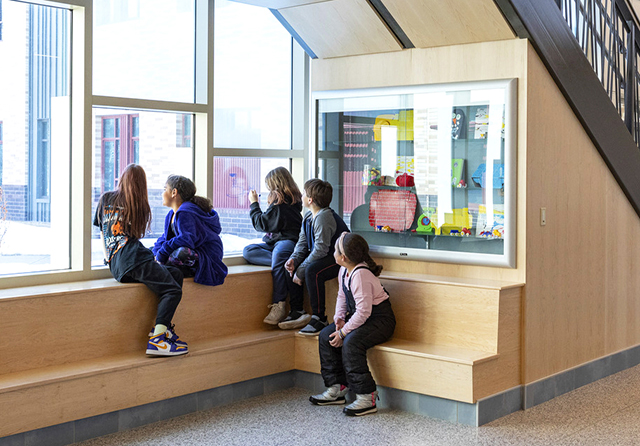
Increased dopamine from novel experiences, such as solving math problems on a window, improves memory and learning. Mountain View School; Studio G Architects, Associate Architect for Elementary Design; Greg Premru Photography
Support for Educators: Learning environments are also professional workplaces for educators. Professional development, training, and resources empower educators to implement UDL principles effectively. But effective delivery of instruction to diverse learners requires collaboration among many educators. Teacher support spaces should adjoin learning spaces to facilitate co-teaching, interdisciplinary learning, and multi-tiered support for learners.
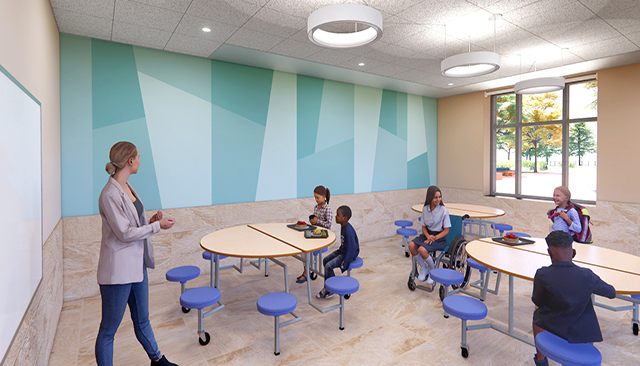
: A small meeting room adjacent to the cafeteria can serve as a “Quiet Cafe” for those overwhelmed by the chaos of lunchtime, as well as a small group classroom or faculty conference room. Florence Roche Elementary School; Studio G Architects
Inspiring Change, One Space at a Time
As stewards of the built environment, school designers have the power to inspire change and shape the future of education. Planning for Universal Design for Learning is not only about the physical spaces; it's about creating environments that nurture every learner, regardless of background or circumstance. Embracing Universal Design for Learning principles transforms classrooms into dynamic ecosystems – catalysts for growth, innovation, and inclusivity. Through intentional design and engagement with educators, architects can create spaces that foster a sense of belonging and enable every learner to reach their fullest potential.
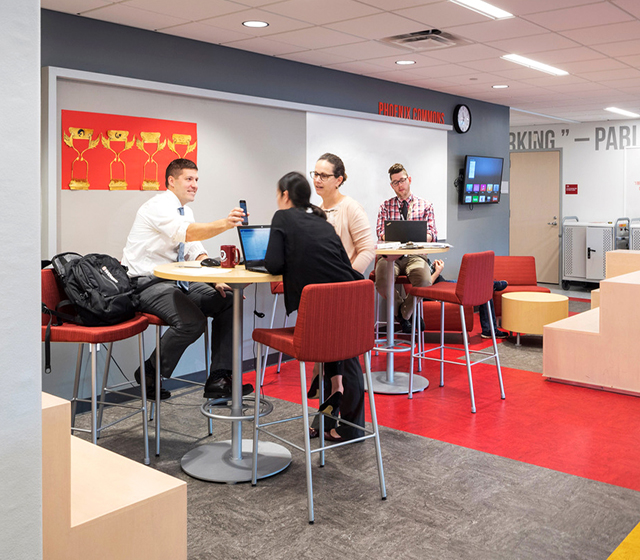
Frequent communication among grade level teammates, instructional support staff, and service providers is crucial in curriculum and instructional alignment. Areas for confidential conversations as well as workplace bonding improve job satisfaction and effectiveness. Boston Prep; Studio G Architects; Greg Premru Photography
At Studio G Architects, I am fortunate to have the opportunity to make a positive impact on young learners, helping enact real change by implementing these design practices into learning environments. Architects can ensure their designs reflect the diverse needs and experiences of students, families, and educators through ongoing dialogues with school community stakeholders. I will continue to advocate for inclusive educational and design principles to work towards a future where every student has equal access to quality education and opportunities for success.
Marylee Mercy is an architect and Accredited Learning Environment Planner at Studio G Architects.